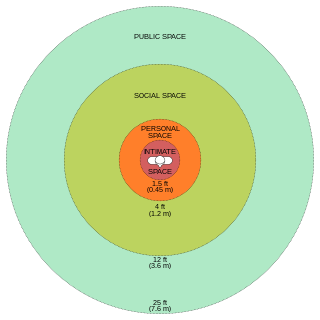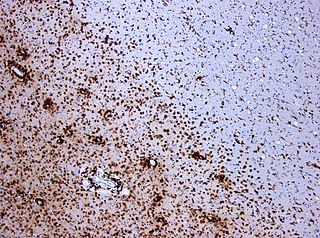
The Diagnostic and Statistical Manual of Mental Disorders (DSM), published by the American Psychiatric Association (APA), offers a common language and standard criteria for the classification of mental disorders. It is used, or relied upon, by clinicians, researchers, psychiatric drug regulation agencies, health insurance companies, pharmaceutical companies, the legal system, and policy makers together with alternatives such as the ICD-10 Classification of Mental and Behavioural Disorders, produced by the WHO.

Dementia praecox is a disused psychiatric diagnosis that originally designated a chronic, deteriorating psychotic disorder characterized by rapid cognitive disintegration, usually beginning in the late teens or early adulthood. Over the years, the term "dementia praecox" was gradually replaced by "schizophrenia", which remains in current diagnostic use.

Emil Kraepelin was a German psychiatrist. H. J. Eysenck's Encyclopedia of Psychology identifies him as the founder of modern scientific psychiatry, psychopharmacology and psychiatric genetics.

Paranoid schizophrenia is the most common type of schizophrenia. Schizophrenia is defined as “a chronic mental disorder in which a person is withdrawn from reality." Schizophrenia is divided into subtypes based on the “predominant symptomatology at the time of evaluation." The subtypes are classified as: paranoid, disorganized, catatonic, undifferentiated, and residual type. However, they are not completely separate diagnoses, and cannot predict the progression of the disease. The clinical picture is dominated by relatively stable and often persecutory delusions that are usually accompanied by hallucinations, particularly of the auditory variety, and perceptual disturbances. These symptoms can have a huge effect on functioning and can negatively affect quality of life. Paranoid schizophrenia is a lifelong disease, but with proper treatment, a person with the illness can attain a higher quality of life.
Schizoaffective disorder is a mental disorder characterized by abnormal thought processes and an unstable mood. The diagnosis is made when the person has symptoms of both schizophrenia and a mood disorder—either bipolar disorder or depression—but does not meet the diagnostic criteria for schizophrenia or a mood disorder individually. The main criterion for the schizoaffective disorder diagnosis is the presence of psychotic symptoms for at least two weeks without any mood symptoms present. Schizoaffective disorder can often be misdiagnosed when the correct diagnosis may be psychotic depression, psychotic bipolar disorder, schizophreniform disorder or schizophrenia. It is imperative for providers to accurately diagnose patients, as treatment and prognosis differs greatly for each of these diagnoses.
Peter Roger Breggin is an American psychiatrist and critic of shock treatment and psychiatric medication. In his books, he advocates replacing psychiatry's use of drugs and electroconvulsive therapy with psychotherapy, education, empathy, love, and broader human services.
Robert Leopold Spitzer was a psychiatrist and professor of psychiatry at Columbia University in New York City. He was a major force in the development of the Diagnostic and Statistical Manual of Mental Disorders (DSM).

Karl Ludwig Kahlbaum was a German psychiatrist.
Feighner Criteria is the informal name given to influential psychiatric diagnostic criteria developed at Washington University in St. Louis, Missouri from the late 1950s to the early 1970s.
Samuel Barry Guze was an American psychiatrist, medical educator, and researcher. He was an influential psychiatrist and worked at the Washington University School of Medicine in St. Louis for most of his career.
Bipolar disorder in children, or pediatric bipolar disorder (PBD), is a mental disorder in children and adolescents that, like bipolar disorder (BD) in adults, is characterized by extreme changes in mood and behavior accompanying periods of depressed or irritable moods and periods of elevated moods called manic or hypomanic episodes. These shifts are sometimes quick, but usually are gradual. The average age of onset of PBD is unclear, but the risk increases with the onset of puberty. PBD is typically more severe and has a poorer prognosis than BD with onset in late-adolescence or adulthood.
The classification of mental disorders is also known as psychiatric nosology or psychiatric taxonomy. It represents a key aspect of psychiatry and other mental health professions and is an important issue for people who may be diagnosed. There are currently two widely established systems for classifying mental disorders:
Psychiatry is the medical specialty devoted to diagnosing, preventing, and treating mental disorders. These include various maladaptations related to mood, behavior, cognition, and perceptions. See glossary of psychiatry.
What was previously known as melancholia and is now known as clinical depression, major depression, or simply depression and commonly referred to as major depressive disorder by many Health care professionals, has a long history, with similar conditions being described at least as far back as classical times.
Personality disorders (PD) are a class of mental disorders characterized by enduring maladaptive patterns of behavior, cognition, and inner experience, exhibited across many contexts and deviating from those accepted by the individual's culture. These patterns develop early, are inflexible, and are associated with significant distress or disability. The definitions may vary somewhat, according to source. Official criteria for diagnosing personality disorders are listed in the Diagnostic and Statistical Manual of Mental Disorders (DSM) and the fifth chapter of the International Classification of Diseases (ICD).
The Research Diagnostic Criteria (RDC) are a collection of influential psychiatric diagnostic criteria published in late 1970s. As psychiatric diagnoses widely varied especially between the USA and Europe, the purpose of the criteria was to allow diagnoses to be consistent in psychiatric research.
The word schizophrenia was coined by the Swiss psychiatrist and eugenicist Eugen Bleuler in 1908, and was intended to describe the separation of function between personality, thinking, memory, and perception. He formally introduced the term on 24 April 1908 in a lecture given at a psychiatric conference in Berlin and in a publication that same year. Bleuler later expanded his new disease concept into a monograph in 1911, which was finally translated into English in 1950.
The Diagnostic Interview for Genetic Studies (DIGS) is a structured interview for psychiatric disorders designed by researchers from the National Institute of Mental Health, first published in 1991. Although most of the diagnoses were based on DSM-III-R criteria, the instrument was also able to generate diagnoses for certain disorders in other systems including DSM-IV, Research Diagnostic Criteria, ICD-10 and Feighner Criteria. This was possible because of the instrument records symptoms in sufficient detail to allow different criteria to be applied. The DIGS interview has gone through a number of revisions since being published. The latest version is DIGS 4.0/BP which was published in 2005. All DIGS versions are available to download from the NIMH Center for Collaborative Genomic Studies on Mental Disorders
George Winokur was an American psychiatrist known for seminal contributions to diagnostic criteria and to the classification and genetics of mood disorder.













